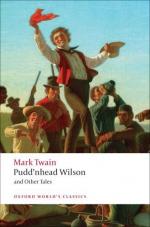At present I wish to ask you to examine some of the Scientist’s performances, as registered in his magazine, ’The Christian Science Journal’—October number, 1898. First, a Baptist clergyman gives us this true picture of ’the average orthodox Christian’—and he could have added that it is a true picture of the average (civilised) human being:
’He is a worried and fretted and fearful man; afraid of himself and his propensities, afraid of colds and fevers, afraid of treading on serpents or drinking deadly things.’
Then he gives us this contrast:
’The average Christian Scientist has put all anxiety and fretting under his feet. He does have a victory over fear and care that is not achieved by the average orthodox Christian.’
He has put all anxiety and fretting under his feet. What proportion of your earnings or income would you be willing to pay for that frame of mind, year in year out? It really outvalues any price that can be put upon it. Where can you purchase it, at any outlay of any sort, in any Church or out of it, except the Scientist’s?
Well, it is the anxiety and fretting about colds, and fevers, and draughts, and getting our feet wet, and about forbidden food eaten in terror of indigestion, that brings on the cold and the fever and the indigestion and the most of our other ailments; and so, if the Science can banish that anxiety from the world I think it can reduce the world’s disease and pain about four-fifths.
In this October number many of the redeemed testify and give thanks; and not coldly but with passionate gratitude. As a rule they seem drunk with health, and with the surprise of it, the wonder of it, the unspeakable glory and splendour of it, after a long sober spell spent in inventing imaginary diseases and concreting them with doctor-stuff. The first witness testifies that when ’this most beautiful Truth first dawned on him’ he had ‘nearly all the ills that flesh is heir to;’ that those he did not have he thought he had—and thus made the tale about complete. What was the natural result? Why, he was a dump-pit ’for all the doctors, druggists, and patent medicines of the country.’ Christian Science came to his help, and ‘the old sick conditions passed away,’ and along with them the ‘dismal forebodings’ which he had been accustomed to employ in conjuring up ailments. And so he was a healthy and cheerful man, now, and astonished.
But I am not astonished, for from other sources I know what must have been his method of applying Christian Science. If I am in the right, he watchfully and diligently diverted his mind from unhealthy channels and compelled it to travel in healthy ones. Nothing contrivable by human invention could be more formidably effective than that, in banishing imaginary ailments and in closing the entrances against subsequent applicants of their breed. I think his method was to keep saying, ’I am well! I am sound!—sound and well! well and sound! Perfectly sound, perfectly well! I have no pain; there’s no such thing as pain! I have no disease; there’s no such thing as disease! Nothing is real but Mind; all is Mind, All-Good, Good-Good, Life, Soul, Liver, Bones, one of a series, ante and pass the buck!’




